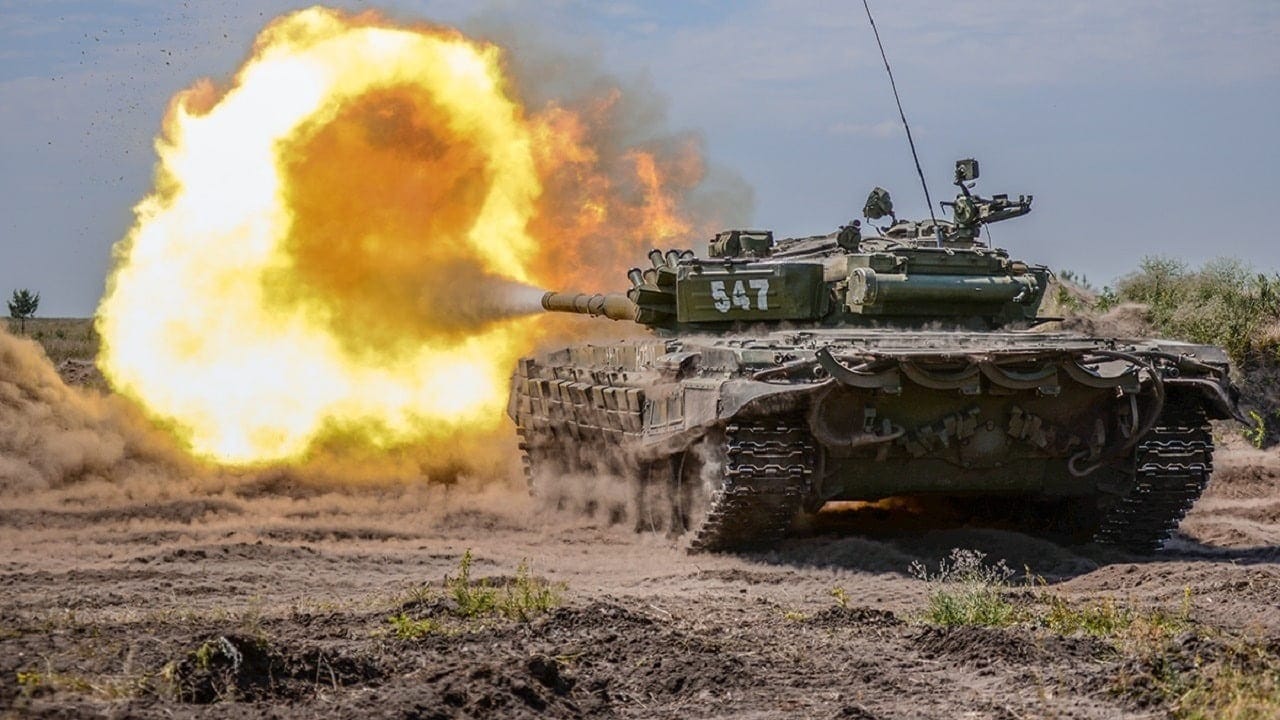T-72 – Russia’s Most Prolific Main Battle Tank is an Antiquated War Machine – According to Ukrainian sources, as well as western observers, Russia has lost a significant number of T-72 tanks to enemy fire since it began its unprovoked and unwarranted invasion of Ukraine. However, Russia likely has plenty to spare. Since it entered production in 1971 – to replace the T-55/55 series – the T-72 has served as the workhorse of the Soviet and later Russian tank forces.
Notable T-72 Facts:
Mass Casualties
The mounting losses of Russian T-72s in Ukraine shouldn’t be a surprise to anyone, except perhaps the Russian military leaders who strangely expected to be welcome with open arms, and even greeted as liberators. When it became apparent that the Ukrainians would put up a fight, perhaps Russia should have known to pull their tanks back sooner based on past battlefield experience.
The 1982 war in Lebanon should have served as an ominous portent that the antiquated tanks were no match for modern anti-tank weapons. Even forty years ago, the Syrian T-72s proved no match for Israeli Merkava main battle tanks (MBTs) and were knocked out in droves. Iraq’s T-72s didn’t fare much better a decade later when the “Lions of Babylon “ – as the locally made T-72s were called – were also destroyed in large numbers during the 1991 Gulf War.
In 2003, U.S. M1 Abrams tanks again engaged their T-72 counterparts and took out huge numbers, while suffering few casualties.
Designed for a Conscript Army
The biggest advantage that the T-72 offers any operator is the fact that it is essentially designed for a conscript army and thus easy to operate and maintain. Despite its poor showing in the 1982 war in Lebanon, the Soviet Union still found eager buyers, and the T-72 was exported around the globe.
It also proved to be fairly versatile, and unlike many Western tanks, it could be equipped for deep-fording of rivers in a matter of minutes. It also offered nuclear, biological and chemical (NBC) protection for the crew, and was produced in variants including a command vehicle, an anti-tank “Cobra” missile launcher, and even an armored recovery vehicle.
Big Thing in a Small Package
At just 41 tons, the T-72 was also extremely lightweight and compact compared to Western MBTs of the late Cold War era. It was designed to traverse bridges in Eastern and Central Europe that would be denied to other MBTs. Yet, it retained the characteristic low silhouette of the early Soviet MBTs, while reactive armor was fitted to variants produced after 1988.
The T-72M was developed as an export version, intended for the armies of the Soviet Union’s Warsaw Pact allies. Clearly, Moscow was cautious, as it had thinner armor and even downgraded weapons systems – and that ensured that Soviet forces wouldn’t be outgunned if one of its client states began to have independent thoughts.
Foreign Made T-72s
The Polish-manufactured T-72G also was equipped with thinner armor, but many of the parts and tools were not interchangeable, which presented logistical problems in the final years of the Cold War.
The T-72CZ M4 was an upgraded version that was still in service in the Czech Republic after the end of the Cold War. It utilized Western fire control systems, along with an Israeli power pack that incorporated a Perkins diesel engine and Allison transmission.
It’s Still in Service
Drawbacks of the T-72 notwithstanding, it has remained in widespread use around the world. With some 1,900 T-72s currently in service, India remains one of the largest operations after Russia.
Even NATO members including Bulgaria, the Czech Republic (Czechia), Hungary, Poland, and Slovakia still continue to maintain a number of the Cold War tanks. The Czech Republic has reportedly transferred some of its aging T-72s to Ukraine, but the question is whether Kyiv should actually be grateful!
While any tank is better than no tank, the T-72 isn’t one that has a glowing combat record by any means. Of course, they’ll be going up against other T-72s – tanks manned by crews that don’t seem all that eager to be there and likely expected they’d be driving the antiquated tanks in a victory parade.
Now a Senior Editor for 1945, Peter Suciu is a Michigan-based writer who has contributed to more than four dozen magazines, newspapers and websites. He regularly writes about military hardware, and is the author of several books on military headgear including A Gallery of Military Headdress, which is available on Amazon.com. Peter is also a Contributing Writer for Forbes.

